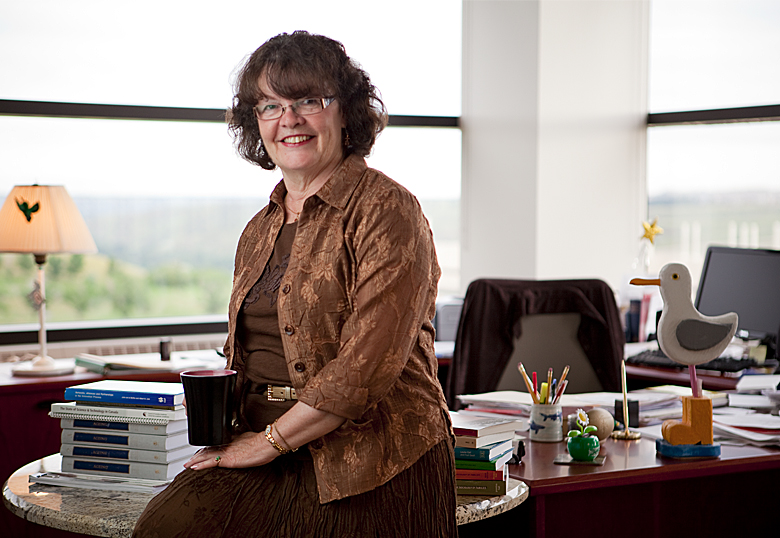Canadian families are becoming more diverse and they’re pretty stable units overall, as shown in the sixth and latest edition of Close Relations.
Authored by Dr. Susan McDaniel, a University of Lethbridge sociology professor and director of the Prentice Institute, along with Dr. Lorne Tepperman from the University of Toronto and Dr. Sandra Colavecchia from McMaster University, the latest edition draws statistics from a variety of sources to paint a portrait of Canadian families.

“The overall message in the sixth edition is that families are fine,” says McDaniel, Canada Research Chair in Global Population and Life Course. “They’ve changed and become more diverse. People who wring their hands and think everybody’s doing away with family should know that is not the case. The reality is most people stay married. The divorce rate has been relatively stable and in fact, it’s gone down. So, marriage is quite alive and well, but it’s also true that the alternatives to marriage are alive and well.”
More and more Canadians are living in long-term relationships without being legally married. They may have lived together for many years and have children together. Canada also has more people who are living a single life, whether they live alone and have a significant other in another location, have had a long-term relationship in their past, or are postponing marriage.
“It does mean that living alone is more popular than it ever has been,” says McDaniel. “Part of that is because we can. In the olden days, women in particular, but also men, had to marry someone to survive because they couldn’t afford to live alone.”
Another notable change in the Canadian family is a fast-growing Indigenous population. McDaniel sees huge possibilities for a growing pool of young people who want to be educated and join the labour market. Indigenous people often start having children when they are younger and their families are often larger.
“When they come to university, very often they already have children and that’s a very different kind of student than an 18-year-old straight out of high school,” says McDaniel. “The Indigenous student may have different needs because they have families already. If we could adapt to that and figure out how to handle that better, we could have more remarkable students come out of university.”
The latest edition of Close Relations also contains figures from the Aboriginal Peoples in Canada: First Nations People, Métis and Inuit National Household Survey of 2011, along with data from Statistics Canada.
“The figures show that 60 per cent of children who live on reserves and 41 per cent of Indigenous children who live off-reserve are considered to be living below the poverty line,” says McDaniel. “In the wake of the Truth and Reconciliation Commission there is a kind of awakening to these problems, including intergenerational issues — how people who are beaten back by policy for generations, which is precisely what happened with the residential school situation, can be affected for generations.”
Another change in the fabric of the Canadian family is that more people with disabilities are becoming parents. This trend has the potential to develop into a policy issue, McDaniel says. A child with a disability becomes an adult with a disability and their parents, as they age, may become unable to look after their child, if that child is dependent. Parents worry about what will happen to their dependent adult children when they can no longer care for them or pass away.
“Most family trends are positive; we want people to live as long as they possibly can,” says McDaniel. “However, it creates policy and personal challenges on the family front. That’s something we don’t know a lot about but I think we should know more.”
